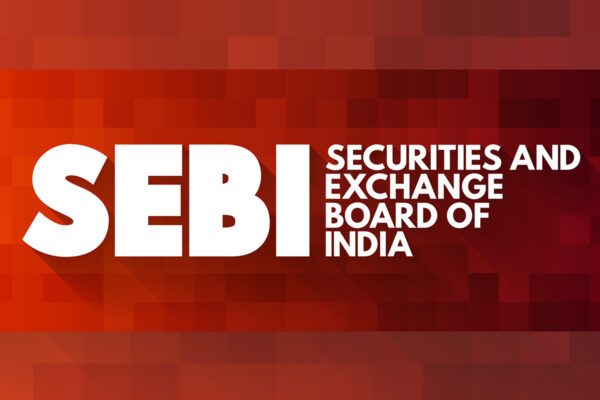Sebi prohibits former Chandamama owners from the capital market for a year after $125 million is lost.

Sebi prohibits former Chandamama owners from the capital market for a year after $125 million is lost.
A once-popular children’s monthly magazine called Chandamama featured myths and morality tales. It might now present an alternative explanation for how $125 million disappeared.
The former proprietors of the publication were banned from the Indian securities market for a year by the Securities and Exchange Board of India (Sebi) on December 19 for misappropriating $125 million. The money had been acquired using foreign currency convertible bonds (FCCBs).
About ten years ago, among Geodesic Ltd.’s 5 companies, Chandamama India Ltd., was placed available for purchase after the Bombay High Court determined to compel the bankruptcy of Geodesic Ltd.

The probe was started by Sebi after it received a notice from the business registration of the Bombay High Court in 2016. The statement alerted the marketplace regulators of a High Court decision in HDFC Bank Ltd v. Geodesic Ltd, in which the judge mandated the marketplace regulators and the Enforcement Directorate to act immediately against the directors of Geodesic Ltd and associated tax advisor Dinesh Jajodia.
What sort of con was that?
It was complicated in compliance with the Sebi instruction. A forensic audit conducted by Sarath and Associates, which was contracted by the market regulator to examine Geodesic Limited’s (GL) books, uncovered a complex network of shell companies used to launder money.
It began in 2008 when the FCCB raised money. The bonds have to be redeemed by January 18, 2013. Unfortunately, the cherished publication was also put up for auction when the High Court mandated the company’s bankruptcy because it had missed the deadline for bond redemption.
According to the Sebi ruling, the corporation invested $93.9 million in Geodesic Holdings Limited (GHL) and $26.8 million in GTSL, with the remaining $3.52 million going toward covering FCCB’s costs. Furthermore, the noticees gave general details about the funds that moved into GHL, meanwhile the entire freaking member SK Mohanty claimed in the decision that details about the funds that flowed into GTSL were “noticeably excluded.”

The Sebi judgment lists irregularities even in the manner in which funds provided to GHL, including a dubious book entry on a $20.1 million firm purchase, a $15 million transaction to a business for investments in treasury securities that’s been inadequately reported for, and an $8 million transaction whose explanations were deemed to be “desiring and substantially poor.”
The verdict also brought up questions over a $64.8 million loan GHL provided to Zomo Technologies, which used the money to buy two later-liquidated companies. The credit came from Absolute Diversified Fund and was given to Zomo Technologies (ADF). One of the two companies that went bankrupt was called Eland Crown, and Jajodia served as a director there.
The Sebi conviction said that the Noticees are wrong to think that the Firm’s money invested in ADF across Zomo was a simple deal. The judge’s order stated that it was more likely “a problematic style of functioning adopted by the Noticees to deflect off Business earnings.”
In the void
The analytical accountants assert that money from the FCCB—which was intended for the purpose of expanding corporate operations through foreign acquisitions, partnerships in joint ventures, or subsidiaries—was inappropriately moved to lend the money to companies wherein Jajodia used to have a direct monetary stake. Regulations of the Reserve Bank of India (RBI) prohibit such loans.
The stated business of the Company, for which the monies were obtained, seemed to be a fraud constructed with fictitious invoices and unclaimed checks. The forensic audit revealed that the majority of the operations used to justify the expenditure of money were fraudulent ones carried out by shell companies.
According to the forensic inspection report mentioned in the Sebi decision, “referencing the Annual report Financial Statements of the Business, this one was discovered that the forensic investigation of the accounting books for the periods 2010-2011, 2011-2012, and 2012-2013 was investigated in depth, and the position of revenues, acquisitions, repayments, savings, and overflows were quasi.”

The carbon copies of the ledgers were used to record straightforward journal entries to account for trade payables. Sales to international consumers didn’t seem to exist, even though they were documented in the books. The company’s subsidiary Geodesic Technology Solutions Limited (GTSL) never collected any of the debtors’ cheques, hence it lacked any fixed assets.
Although significant inter-corporate deposits were made, they were written off. The company’s listed debts were later found to be fictitious companies. Software vendors who demanded high prices for their products were out to be phony companies. Last but not least, there were no excesses or buffers built because scheduled transactions were canceled.
The money was allegedly transmitted to other firms wherein Jajodia or members of his family used to have an interest by engaging bogus or mule businesses as suppliers and by engaging in various round-tripping or layered transactions (SCN). Two people said in their testimony at the Sebi investigation that Mulekar had connected them to him through Jajodia so they could create phony bills in consideration for royalty. The money would be transferred from GL to the six corporations that produced the bills, who would then disperse it among the parties named by Jajodia.
In addition to what looked to be reimbursements to vendors, the forensic investigator discovered money transfers from GL to companies connected to Jajodia for what seemed to be no good reason. There was a complete lack of detail regarding these dealings in both the required auditing process and the accounting records.
edited and proofread by nikita sharma




